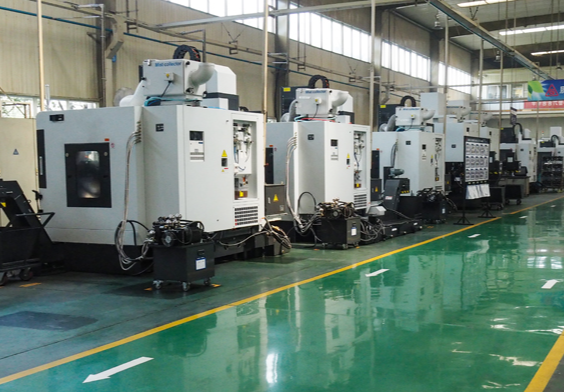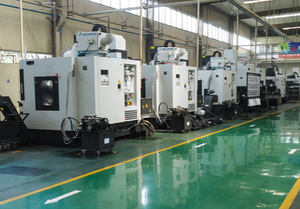
Detailed Explanation of Inspection Standards and Procedures for Mechanical Equipment Inspection and Audit Services for Factories
Mechanical equipment, as a core component of the industrial production system, its quality and reliability directly affect production safety and operational efficiency. During the inspection, factory verification, and product certification processes of mechanical equipment, a strict quality control system must be established. This article will systematically elaborate on the inspection standards, inspection procedures, and quality certification requirements for mechanical equipment, providing professional guidance for relevant practitioners.
I. Equipment Inspection and Certification Process
(1) Appearance Quality Inspection Certification
Inspection of packaging condition
Inspection standard: The outer packaging should be intact without any damage, wetness or deformation.
Certification requirement: The packaging condition must comply with the transportation protection standards.
Problem handling: If any damage is found, take photos immediately as evidence and initiate the claim process.
Inspection of the equipment body
Surface quality: Free from defects such as damage, rust, or scratches.
Key checks: integrity of the mainframe, core components, and main working surfaces
Certification Record: Detailed description of defect conditions, accompanied by photo evidence
(2) Quantity Configuration Verification and Certification
Quantity Counting Certification
According to the documents: Supply Contract, Packing List
Inspection scope: Specifications, models and quantities of the main unit and accessories
Verification method: Conduct a detailed item-by-item check to ensure accuracy.
Inspection of documentation and files
Required documents: Instruction manual, Product certificate of conformity, Warranty form
Technical documentation: Includes software materials such as drivers.
Serial number verification: Check the device serial number against the factory-issued number.
(3) Quality Performance Inspection and Certification
Power Supply Test Certification
Power check: Verify that the power parameters are consistent with the requirements of the equipment.
Running test: The equipment started normally without any fault alarms.
Stability verification: 48-hour continuous power-on test
Technical indicator certification
Configuration verification: The hardware configuration complies with the contract requirements.
Performance test: Technical indicators meet the specified standards.
Installation and commissioning: Operate strictly in accordance with the instructions.
II. Acceptance Certification Standards for Equipment Installation
(1) Appearance Condition Certification
Visual inspection of equipment appearance
Condition of the equipment: More than 70% new, with a clean appearance.
Complete structure: The outer shell and protective cover are undamaged and undistorted.
Identification standard: Uniform numbering, neat and aesthetically pleasing font style
Inspection of the line system
Cable condition: No cracks or aging phenomena.
Connection quality: The connection is firm and the insulation is good.
Safety certification: No exposed wires, in compliance with electrical standards
(2) Structural Integrity Certification
Body Structure Inspection
Structurally intact: All parts are complete and without any damage.
Welding quality: No weld separation or crack defects
Secure connection: No unauthorized substitutes for fasteners used.
Work device certification
Transmission performance: Smooth operation with no jamming or abnormal noises.
Smooth operation: The entire machine has low noise and minimal vibration.
Performance compatibility: The working ability is in line with the model.
(3) Safety Protection Certification
Protection Device Inspection
Complete and effective: The safety guard cover and the casing are intact.
Limiting device: Highly sensitive and reliable, with precise positioning.
Braking system: Operates flexibly and ensures safe braking.
III. Technical Document and Record Management Certification
(1) Certification of Acceptance Documents
Acceptance record requirements
Inventory count record: Detailed record of the inspection process
Power-on test record: Comprehensive record of test data
Problem handling record: Clearly document non-compliant items
Submission of certification documents
Required documents: Inventory checklist upon unpacking, Power-on inspection form, Test report
Attached files: Serial number records, on-site photos
Confirmation procedure: The representative of the supplier signs and stamps to confirm.
(2) Technical Document Certification
Verification of Required Documents
Qualification documents: Product certificate of conformity, Production license
Technical documents: User manual, Installation manual
Basic information: Basic reference book, maintenance guide
IV. Key Points for Equipment Inspection and Certification
(1) Certification of Inspection Environment
Inspection Conditions
Site requirements: A flat and stable testing area
Power supply configuration: A power system that meets the requirements of the equipment.
Safety measures: Complete safety protection facilities
(2) Sampling Inspection Plan
Inspection Criteria
Comprehensive inspection: Important equipment, key components
Sampling inspection: Batch equipment, standard components
Key inspections: Safety devices, core systems
(3) Quality Certification
Certification standards for qualification
Appearance quality: Meets the acceptance standards
Performance indicators: Meet the technical requirements
Document materials: Complete, intact and valid
Problem handling mechanism
Serious defect: Reject immediately and initiate claim
General question: Re-inspection after the deadline for rectification
File missing: It can only be accepted for inspection after being fully completed.
V. Continuous Improvement and Certification Maintenance
(1) Quality Record System
Inspection Record Management
Data completeness: Detailed records of the entire testing process
Root cause analysis: Establishing a comprehensive root cause analysis mechanism
Archival preservation: Long-term preservation of acceptance of archival materials
(2) Supplier Management Certification
Supplier Evaluation
Qualification Certification: Thorough review of supplier qualifications
Quality system: Evaluate the quality management system of suppliers
Performance tracking: Establish a supplier performance evaluation system
By establishing a complete equipment inspection and certification system, and strictly implementing quality control throughout the entire process from procurement to acceptance, it is possible to effectively ensure the quality reliability of the equipment, provide a strong guarantee for production and operation, and promote the standardized development of equipment management.
分享这个商品

Detailed Explanation of Inspection Standards and Procedures for Mechan
Mechanical equipment, as a core component of the industrial production system, its quality and reliability directly affect production safety.
